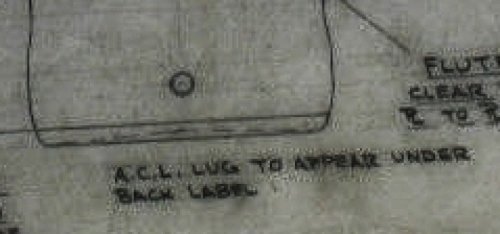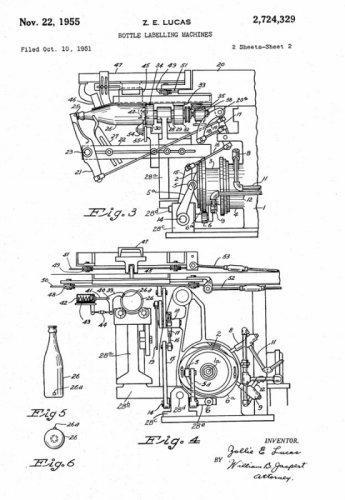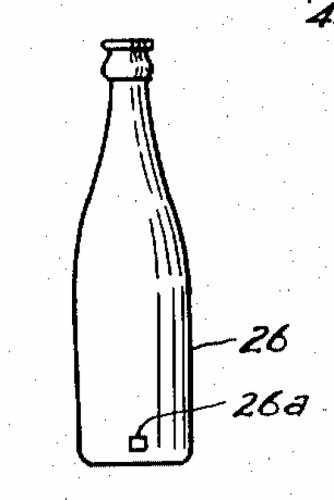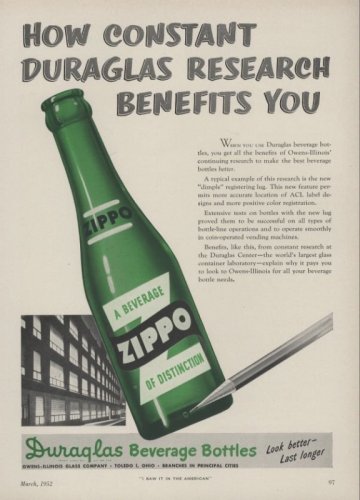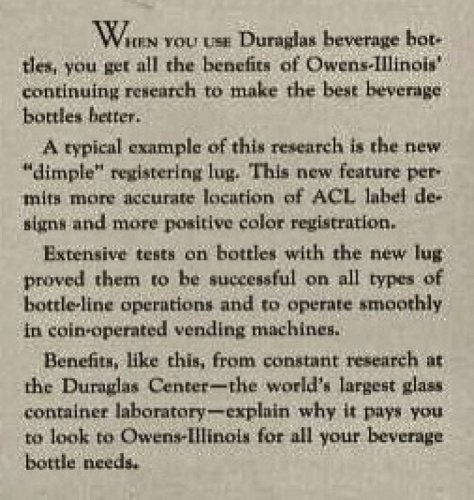This weekend, I was in the process of documenting all of my acls, and I came across an interesting cott that I cant seem to date. I think the lip says 'w', but the bubble at the base is sticking out. There is another code on the lip that I don't really know about. Please help me date this bottle!!! The other lip code looks like: 3•3
You are using an out of date browser. It may not display this or other websites correctly.
You should upgrade or use an alternative browser.
You should upgrade or use an alternative browser.
Glenshaw Glass Coding- I'm stumped on this one!
- Thread starter tsalz14
- Start date
SODAPOPBOB
Well-Known Member
- Joined
- Mar 10, 2010
- Messages
- 11,502
- Reaction score
- 49
- Points
- 0
Tsalz14 What you refer to as the "bubble" is a Lug / Locating Lug / Spotting Bar. I have never fully researched them, so I'm not sure if you can use them to date a bottle. Because they were used during the acl process, I'd say the earliest use of them was in the late 1930s or early 1940s. But you might be right about them being introduced in the 1950s. I'm really not sure. The following is copy/pasted from another thread by Red Matthews who worked at a glass factory for many years.
Spotter Bars and Locating Lugs: Were inserted in molds when special locaters were specified. Early burn off required these be made of bronze or special metals with a high nickel alloy that I sold for several years. These catching shaped little pins were inserted in the mold base above the bottom plate match. They were shaped to be caught by a metal catcher that stopped the rotation of the bottle in the right radial location to put a label in the label panel or to make the multi color ACL silk screened labels have each color transfer in the correct super imposed painted printing. I am sure you have seen these little indentations in the glass near the bottom and you no doubt knew what they were for. They were very necessary for the success of applying the different colors of silk screened layouts on the glass before the painted bottles went through the lehr to bake on the paints. RED Matthews
[ Attachment ]
Cropped from a Pepsi Cola blueprint
Spotter Bars and Locating Lugs: Were inserted in molds when special locaters were specified. Early burn off required these be made of bronze or special metals with a high nickel alloy that I sold for several years. These catching shaped little pins were inserted in the mold base above the bottom plate match. They were shaped to be caught by a metal catcher that stopped the rotation of the bottle in the right radial location to put a label in the label panel or to make the multi color ACL silk screened labels have each color transfer in the correct super imposed painted printing. I am sure you have seen these little indentations in the glass near the bottom and you no doubt knew what they were for. They were very necessary for the success of applying the different colors of silk screened layouts on the glass before the painted bottles went through the lehr to bake on the paints. RED Matthews
[ Attachment ]
Cropped from a Pepsi Cola blueprint
Attachments
SODAPOPBOB
Well-Known Member
- Joined
- Mar 10, 2010
- Messages
- 11,502
- Reaction score
- 49
- Points
- 0
P.S. Some of the so called Lugs appear as a hole or "Dimple" but I'm not sure which came first, the Lug or the Dimple. ???
SODAPOPBOB
Well-Known Member
- Joined
- Mar 10, 2010
- Messages
- 11,502
- Reaction score
- 49
- Points
- 0
tsalz14 If you don't mind, I thought I'd do a little research and see what I can find regarding the Lugs, especially anything involving dates. For starters I found this ... ACL LUGA small protrusion or small depressed cavity in a base of bottle to act as a guide in positioning the bottle in the decorating machine for application of ACL. http://www.packagingcrashcourse.com/packaging-resource-guide/glossary/
SODAPOPBOB
Well-Known Member
- Joined
- Mar 10, 2010
- Messages
- 11,502
- Reaction score
- 49
- Points
- 0
Man-o-man [:-] ... unless someone has already researched acl lugs, I can already see where it's going to be a real challenge narrowing down the dates. I'm beginning to think the best way would be to examine a bunch of bottles that are clearly date marked and see which one's are the earliest that have lugs. It's kind of like searching for a needle in a haystack, but I did find the following that will confirm lugs were used at least as early as 1951 Bottle Labelling Machine Knox Glass Bottle CompanyFiled October 10, 1951Patented November 22, 1955 Copy/Pasted from patent text ...
The present invention modifies the conventional apparatus to the extent of the use of the friction drive through belt 36 and the pneumatic motor 38 and by the use of the pneumatically actuated stop 39 that engages the registering lug 26a.
(But I do not know if this was the first machine to use a registering lug or a later one) ???
https://www.google.com/patents/US2724329?dq=applied+color+label+bottle+lug&hl=en&sa=X&ei=-VnjVJGiEZLwoAT-0oCgBg&ved=0CB0Q6AEwAA
[ Attachments ]
1. Patent image
2. Cropped image of "Registering Lug 26a" on a bottle
The present invention modifies the conventional apparatus to the extent of the use of the friction drive through belt 36 and the pneumatic motor 38 and by the use of the pneumatically actuated stop 39 that engages the registering lug 26a.
(But I do not know if this was the first machine to use a registering lug or a later one) ???
https://www.google.com/patents/US2724329?dq=applied+color+label+bottle+lug&hl=en&sa=X&ei=-VnjVJGiEZLwoAT-0oCgBg&ved=0CB0Q6AEwAA
[ Attachments ]
1. Patent image
2. Cropped image of "Registering Lug 26a" on a bottle
Attachments
SODAPOPBOB
Well-Known Member
- Joined
- Mar 10, 2010
- Messages
- 11,502
- Reaction score
- 49
- Points
- 0
Should anyone else look into this, let's simplify it by using either ... Innie or Outie That way we'll know if we are referring to a protruding lug or an indented lug
SODAPOPBOB
Well-Known Member
- Joined
- Mar 10, 2010
- Messages
- 11,502
- Reaction score
- 49
- Points
- 0
P.S. I'm not certain yet but I believe the 1951/1955 machine uses an outie lug Copy/Pasted from text ... "As is more clearly shown in Figs. 5 and 6, the bottle 26 is provided with a registering lug 26a that is formed integrally with the bottle in the molding operation."
SODAPOPBOB
Well-Known Member
- Joined
- Mar 10, 2010
- Messages
- 11,502
- Reaction score
- 49
- Points
- 0
Similar threads
- Replies
- 58
- Views
- 10K
- Replies
- 7
- Views
- 3K
- Replies
- 10
- Views
- 4K
Latest threads
-
Is this a Miniature backbar bottle?
- Started by timeandabottle
- Replies: 0
-
Hot day nothing like cooling off with a Mountain Dew and a snow maid
- Started by Bluestreak39
- Replies: 0
-
-
-
-

